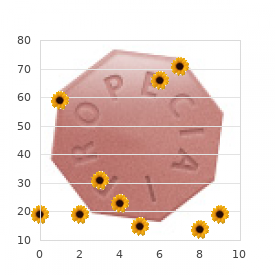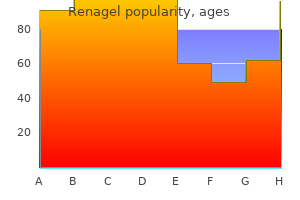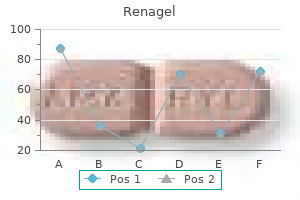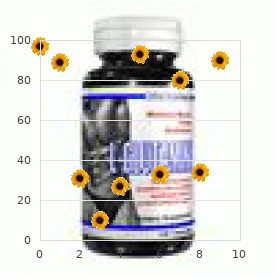Abby M. Gonik, MD
- Department of Obstetrics and Gynecology
- Abington Memorial Hospital
- Abington, Pennsylvania
Shoulder gastritis symptoms vs gallbladder renagel 400 mg without a prescription, posterior view Lesser Neck 1 tubercle Acromion 2 Supra scapular 4 notch Medial Greater tubercle border Head of humerus Supra 5 Head of spinous humerus fossa Inferior 2 Deltoid Lateral angle tuberosity border Deltoid tuberosity Infraspinous fossa 3 Radial groove 3 Olecranon fossa Lateral 6 epicondyle Lateral epicondyle Medial epicondyle Medial epicondyle Capitulum C gastritis diet 100 buy cheap renagel on line. The passes deep to the joint capsule to insert on the supraglenoid shoulder joint is reinforced by four rotator cuff muscles gastritis quotes cheap renagel 400 mg otc, whose tubercle of the scapula gastritis diet ����� order generic renagel on line. Features of the shoulder joint ligaments tendons help stabilize the joint (also see Plate 3-17 on rotator and bursae are summarized in the table below. Subscapularis tendon muscle tendon is especially vulnerable because it can become n 3. Biceps brachii tendon (long head) pinched by the greater tubercle of the humerus, the acromion, n 4. Teres minor tendon places stress on the capsule and anterior elements of the rotator cuff (especially the subscapularis tendon). Anterior view Clavicle Acromioclavicular joint capsule Acromion Trapezoid ligament Coraco Coraco-acromial ligament clavicular Conoid ligament 1 ligament Coracohumeral ligament 2 Coracoid process Transverse humeral ligament 4 Deltoid muscle (reflected) 3 Supraspinatus muscle B. Anterior view Subdeltoid bursa fused with subacromial bursa Subscapularis muscle 4 Synovial membrane 3 Subdeltoid bursa Acromion 1 2 Subdeltoid and Acromioclavicular joint subacromial bursae Acromion Coraco-acromial ligament Coracoid process 1 Coracohumeral ligament Subdeltoid and Glenoid subacromial bursae labrum 3 5 Deltoid muscle Glenoid cavity (cartilage) 2 6 Subscapular bursa Glenoid Synovial membrane cavity of (cut edge) scapula Axillary recess C. Ulna fossa (a cubit is an ancient term for linear measurement and was the length from the elbow to the tip of the middle fnger) and is a common site for venipuncture (access to a vein to withdraw the elbow joint is composed of the following joints, and its blood or administer fuids). Radial collateral ligament: on the lateral side of the outstretched hand, and a dislocation in the posterior direction is elbow the most common type. Anular ligament: surrounds the radial head in the proximal radio-ulnar articulation n 5. Ulnar collateral ligament: on the medial side of the elbow Plate 2-12 See Netter: Atlas of Human Anatomy, 6th Edition, Plates 422, 424, and 425. Right radius and ulna in supination: anterior view in pronation: anterior view Olecranon C. Opened joint: anterior view Olecranon Trochlear notch Trochlear notch Coronoid process Coronoid Head process Neck Radial notch Humerus of ulna Joint capsule (cut edge) Radial tuberosity Ulna Fat pads tuberosity 2 1 Synovial membrane 2 1 Articular cartilage 2 1 Humerus Medial epicondyle Capitulum Trochlea Head D. In 90 flexion: medial view Neck Styloid Tuberosity process of ulna Radius Interosseous membrane Styloid process Ulna Humerus Tuberosity Coronoid process Trochlear notch Olecranon Humerus Joint Joint capsule capsule Triceps brachii 4 Biceps brachii tendon 1 4 Triceps tendon brachii Biceps brachii tendon tendon 3 5 2 E. Sesamoid bones (two at the distal end of the thumb metacarpal) Capitate (round bone) Hamate (hooked bone) Metacarpals Numbered 1-5 Possess a base, shaft, and head (thumb to little fnger) Are triangular in cross section Fifth metacarpal most commonly fractured Two sesamoid bones Are associated with head of frst metacarpal Phalanges Three for each digit except thumb Possess a base, shaft, and head Termed proximal, middle, and distal Distal phalanx of middle fnger commonly fractured Plate 2-13 See Netter: Atlas of Human Anatomy, 6th Edition, Plates 439 and 443. Skeletal System Wrist and Hand 2 Ulna Ulna Radius Radius 4 4 1 5 5 6 1 2 7 7 2 3 8 8 3 A. Skeletal System Wrist and Finger Joints and Movements 2 Radius Ulna Ulna Radius Ulna Radius Interosseous Dorsal 3 membrane radio-ulnar Lunate ligament Scaphoid Palmar Triquetrum Scaphoid radioulnar Ulnar 1 ligament collateral Radial ligament collateral Radial Lunate ligament collateral Hook of 2 Hamate ligament hamate Trapezium Hamate Palmar Capitate metacarpal Capitate ligaments Dorsal carpometacarpal ligaments Trapezium Trapezoid A. Coronal section: dorsal view 4 Metacarpal bone Dorsal surface 5 6 Deep transverse metacarpal ligaments Palmar surface Proximal Middle Distal E. For example, the female ischium, and pubis, which all join each other in the acetabu pelvis has wider iliac crests and a broader pubic arch than the lum (a cup-shaped feature for articulation with the head of male pelvis has. Finally, the pelvis articulates with the sacrum at the femur, our thigh bone); the two pelvic bones (right and the sacro-iliac (plane synovial) joint, which is reinforced by strong left) articulate with the sacrum posteriorly and at the pubic ligaments that provide stability and support. The joints and liga symphysis anteriorly ments of the pelvic girdle are summarized in the table below. Skeletal System Pelvic Girdle 2 Wing (ala) of ilium Posterior (iliac fossa) Iliac tuberosity superior iliac spine Anterior superior Auricular surface iliac spine (for sacrum) Posterior inferior Anterior iliac spine 2 superior Greater sciatic iliac spine notch Greater sciatic notch Acetabulum 2 1 3 1 3 Lesser sciatic notch Pubic tubercle Ramus of ischium Ischial tuberosity A. Medial view (right side) Iliolumbar ligament 4 Anterior longitudinal ligament Iliolumbar ligament Greater sciatic foramen 7 5 5 Greater 6 sciatic Coccyx foramen Ischial spine 6 Ischial tuberosity Lesser sciatic foramen 8 C. Unlike the ball-and-socket shoulder joint, the hip joint different color for each ligament or feature: is designed for stability and support at the expense of some n 1. Ischiofemoral ligament: positioned posteriorly major ligaments that surround the hip joint and one internal liga ment to the head of femur. In the young, the fracture of ten results from trauma, whereas in the elderly the cause is often related to osteoporosis and associated with a fall. Skeletal System Hip Joint 2 1 3 1 Iliopectineal bursa (over gap in ligaments) Greater Greater trochanter trochanter 2 Protrusion of synovial membrane Ischial tuberosity B. Anterior view Ligaments of joint capusle 5 4 Synovial membrane Anterior superior iliac spine 4 5 Obturator artery Obturator membrane Head of femur Neck of femur Transverse acetabular ligament 6 C. The femur is the longest bone in different color for each bone: the body and transmits the weight of the body from the knee to n 1. Fibula larger of the two leg bones and is medially placed in the leg, and its shaft can be palpated just beneath the skin from the base of the knee to the ankle joint. The articulation of the distal femur Clinical Note: and proximal tibia forms the knee joint, and a large sesamoid Most fractures of the femur occur across the neck of femur bone called the patella lies anterior to this joint and is embed within the articular capsule. Tibial fractures occur most fre ded in the tendon of the quadriceps femoris muscle. The fbula quently where the tibial shaft is narrowest, which is about one is not a weight-bearing bone, is found laterally in the leg, and is third of the way down the shaft. Features of the tibia and mon just proximal to the lateral malleolus, just above the ankle fbula are summarized in the table below. Skeletal System Thigh and Leg Bones 2 Head Greater trochanter Neck Greater trochanter Lesser trochanter 1 1 Medial epicondyle Lateral epicondyle 2 Lateral condyle Lateral epicondyle Medial condyle Apex Tibial tuberosity Lateral condyle Head Neck 3 4 3 4 Lateral Medial malleolus malleolus Lateral malleolus A. Features of this deepens the articular surface and acts as a shock joint are summarized in the table below. Lateral meniscus: similar disc of fbrocartilage on the lateral side of the tibia n 6. Skeletal System Knee Joint 2 3 Medial 4 condyle of femur Medial Lateral condyle condyle 2 of femur of femur Posterior 1 5 meniscofemoral ligament 6 Transverse 1 ligament Head of fibula Medial condyle of tibia 2 A. In flexion: anterior view Femur 3 Quadriceps 6 Popliteus tendon femoris tendon 2 Suprapatellar bursa Bursa 1 Patella Subcutaneous prepatellar bursa Patellar ligament Synovial Infrapatellar fat pad membrane Subcutaneous infrapatellar bursa Synovial 5 membrane Deep infrapatellar bursa Superior Articular cartilages articular surface Lateral meniscus of tibia (lateral facet) Tibia 4 Infrapatellar fat pad Patellar ligament C. Lateral view Tuberosity of 7 6 5th metatarsal bone 1 Tuberosity of 1st metatarsal bone B. Medial view 8 Tuberosity of navicular 8 7 Head Shaft (body) 6 Head Base Body 4 4 3 Base Groove 5 3 Head 5 2 2 Sustentaculum tali Trochlea 1 1 C. The ankle joint is primarily a ta ligament, it helps support the medial arch of the foot locrural (talus with the distal tibia of the leg) joint (weight-bearing) n 7. Capsule of a proximal interphalangeal joint and laterally, a talofbular (talus with the distal fbula of the leg) joint. Posterior talofbular usually caused by forceful landing on the heel, as in jumping n from a great height. Medial (deltoid) ligament: composed of four separate medially, and the components of the lateral collateral ligament ligaments extending from the tibia to the talus or are stretched or torn. Skeletal System Ankle and Foot Joints 2 Tibia Fibula Anterior Posterior tibiofibular tibiofibular ligaments ligaments 1 Calcaneonavicular ligament Bifurcate ligament 2 Calcaneocuboid ligament 3 Dorsal metatarsal ligaments Tibia 5 Calcaneal (Achilles) 4 tendon (cut) Navicular bone A.



Infuenza immunization of pregnant women also protects infants younger than 6 months of age who cannot be immunized actively and in whom antiviral prophylaxis and treatment options are limited can gastritis symptoms come go safe renagel 800 mg. Infuenza vaccines are not approved for use in infants younger than 6 months of age gastritis diet ������� cheap renagel express. Pneumococcal and meningococcal vaccines can be given to a pregnant woman at high risk of serious or complicated illness from infection with Streptococcus pneumoniae or Neisseria meningitidis gastritis diet mayo renagel 800 mg with visa. Meningococcal conjugate vaccine can be given to a pregnant woman when there is increased risk of disease gastritis diet ������ buy 800 mg renagel otc, such as during epidemics or before travel to an area with hyperendemic infection. Hepatitis A or hepatitis B immunizations, if indicated, can be given to pregnant women. Although data on safety of these vaccines for a pregnant woman or developing fetus are not available, no risk would be expected. Pregnancy is a contraindication to administration of all live-virus vaccines, except when susceptibility and exposure are highly probable and the disease to be prevented poses a greater threat to the pregnant woman or fetus than does the vaccine. Although only a theoretical risk to the fetus exists with a live-virus vaccine, the background rate of anomalies in uncomplicated pregnancies may result in a defect that could be attrib uted inappropriately to a vaccine. Because measles, mumps, rubella, and varicella vaccines are contraindicated for pregnant women, efforts should be made to immunize susceptible women against these illnesses before they become pregnant or after pregnancy. Although of theoretical con cern, no case of embryopathy caused by the attenuated rubella vaccine strain has been reported. However, a rare theoretical risk of embryopathy from inadvertent rubella vaccine administration cannot be excluded. Of the 827, 54 chose elective termination for unknown reasons, 168 were seronegative, and 605 were unknown or seropositive. Seven hundred twelve of these women were known to have received varicella vaccine inadvertently within 3 months before or during pregnancy and had known pregnancy outcomes available for analysis and considered complete. The prevalence estimates of birth defects were compatible with the background number of congenital anomalies expected in the general population. Reporting of instances of inadvertent immunization with a varicella/zoster virus-containing vaccine during pregnancy by telephone is encouraged (1-800-986-8999). A pregnant mother or other household member is not a contraindication for vari cella immunization of a child in that household. Transmission of vaccine virus from an immunocompetent vaccine recipient to a susceptible person has been reported only rarely, and only when a vaccine-associated rash develops in the vaccinee (see Varicella Zoster Infections, p 774). Varicella has not been detected by poly merase chain reaction assay in human milk specimens after immunization, and infants breastfed by mothers immunized with varicella vaccine do not seroconvert to varicella. Varicella-Zoster Immune Globulin should be considered strongly for susceptible, pregnant women who have been exposed to natural varicella infection. If Varicella-Zoster Immune Globulin is not available, some experts suggest use of Immune Globulin Intravenous; use of acyclovir in this circumstance has not been evaluated. Pregnant women at risk of exposure to unusual pathogens should be considered for immunization when the potential benefts outweigh the potential risks to the mother and fetus. It should not be administered to pregnant women, and pregnancy should be avoided for 3 months following a dose. If a woman is found to be pregnant after initiating the immunization series, the remainder of the 3-dose regimen should be delayed until after completion of the pregnancy. If a vaccine dose has been administered during pregnancy, no intervention is needed. There has been no reported association between rabies immunization and adverse fetal outcomes. Women should be immunized before conception, if pos sible, but Japanese encephalitis virus vaccine should be considered if travel to regions with endemic infection and mosquito exposure is unavoidable and the risk of disease 1 See n. Because smallpox causes more severe disease in pregnant than nonpregnant women, the potential risks of immunization may be outweighed by the risk of disease. Immunized household contacts should avoid contact with pregnant women until the vaccination site is healed. Immunocompromised people vary in their degree of immunosuppression and susceptibility to infection and represent a het erogeneous population with regard to immunization. Immunodefciency conditions can be grouped into primary and secondary (acquired) disorders. Primary disorders of the immune system generally are inherited, usually as single-gene disorders; may involve any part of the immune defenses, including B-lymphocyte (humoral) immunity, T-lymphocyte (cell)-mediated immunity, complement and phagocytic function, and abnormalities of innate immunity; and share the common feature of susceptibility to infection. Published studies of experience with vaccine administration to immunocompromised children are limited. In many situations, theoretical considerations are the primary guide to vaccine administration, because expe rience with individual vaccines in people with a specifc disorder is lacking. Applying public health strategies to primary immunodefciency diseases: a potential approach to genetic disorders. In general, people who are severely immunocompromised or in whom immune function is uncertain should not receive live vaccines, either viral or bacterial, because of the risk of disease caused by the vaccine strains. There are particular immune defciency disorders with which some live vaccines are safe, and for certain immunocom promised children and adolescents, the benefts may outweigh risks for use of particular live vaccines. All children 6 months of age and older and adolescents with primary and secondary immuno defciencies should receive an annual age-appropriate inactivated infuenza vaccine to prevent infuenza and secondary bacterial infections associated with infuenza disease. However, immune responses of immunocompromised children to inactivated vaccines, including trivalent inactivated infuenza vaccine, may be inadequate. In children with secondary immunodefciency, the ability to develop an adequate immunologic response depends on the presence of immunosuppression during or within 2 weeks of immuniza tion. In children with malignant neoplasms, if possible, inactivated infuenza immuni zation should be given no sooner than 3 to 4 weeks after a course of chemotherapy is discontinued and when peripheral granulocyte and lymphocyte counts >1000 cells/L (1. In children, an adequate response to vaccines usually occurs 9 between 3 months and 1 year after discontinuation of immunosuppressive therapy. Fatal or chronic poliomyelitis, measles, and vaccinia have occurred in children with severe disorders of T-lymphocyte function after administration of the respective live-virus vaccines. Inactivated vaccines, including polio virus and trivalent infuenza vaccines, should be administered. Immunization of children with less severe T-lymphocyte associated immunodefciencies, such as partial DiGeorge syndrome (thymic hypoplasia), should be decided on an individual basis with expert advice. Specifc immune globulins are available for postexposure prophylaxis for some infections (see Specifc Immune Globulins, p 59). Children with milder B-lymphocyte and antibody def ciencies have an intermediate degree of vaccine responsiveness and may require monitor ing of postimmunization antibody concentrations to confrm responses to vaccination. Because these vaccines are recommended for infants 1 beginning at 6 weeks of age, some recipients will have these as-yet undiagnosed diseases and have the potential for prolonged shedding and illness. The potential risks should be weighed against the benefts of administering rotavirus vaccine to infants with known or suspected altered immunocompetence (see Rotavirus, p 626). Children with early or late complement defciencies should receive all routinely recommended immunizations, including live-virus vaccines. In addition, children with early complement defciencies should receive pneumococcal vaccine (including pneumococcal polysac charide vaccine) and meningococcal conjugate vaccine (see Pneumococcal Infections, p 571, and Meningococcal Infections, p 500, for specifc details). Children with late comple ment defciencies should receive meningococcal conjugate vaccine starting at 9 months of age. Children with phagocytic function disorders, including chronic granulomatous disease and leukocyte adhesion defects, should receive all recommended childhood vac cines. Live-bacterial vaccines (bacille Calmette Guerin and Salmonella typhi) should not be administered to children with phagocytic disorders. Several factors should be considered in immunization of children with secondary immunodefciencies, including the underly ing disease, the specifc immunosuppressive regimen (dose and schedule), and the infec tious disease and immunization history of the person. Live-viral vaccines generally are contraindicated because of a proven or theoretical increased risk of prolonged shedding and disease. Addition of severe combined immunodefciency as a contra indication for administration of rotavirus vaccine. Although varicella vaccine has 1 been studied in children with acute lymphoblastic leukemia in remission, varicella vac cine generally should not be given to children with acute lymphocytic leukemia or another malignancy, because (a) many children will have received varicella vaccine prior to immune suppression and may retain protective immunity; (b) the risk of acquiring varicella has diminished in some countries with universal immunization programs; (c) antiviral agents are available for treatment; and (d) chemotherapy regimens change fre quently and often are more immunosuppressive than regimens under which the safety and effcacy of varicella vaccine was studied (see Varicella-Zoster Infections, p 774). Live-virus vaccines usually are withheld for an interval of at least 3 months after immunosuppressive cancer chemotherapy has been discontinued.

The condition may be brought on by prolonged sitting or by pressure in the area and usually responds to local heat gastritis and diarrhea renagel 800 mg line, stretching gastritis y diarrea best buy renagel, or glucocorticoid injection gastritis diet juicing buy generic renagel 800 mg. Iliopectineal Bursitis Iliopectineal bursitis gastritis xarelto order renagel no prescription, which is caused by irritation of the bursa between the iliopsoas muscle and the inguinal ligament, is an uncommon cause of inguinal pain and may mimic true hip joint disease. The diagnosis is suggested by the presence of inguinal pain that is aggravated by extension of the hip (in a patient whose hip x-ray is normal). Treatment is usually with local measures or, in rare cases, by means of surgical excision. Meralgia Paresthetica Meralgia paresthetica is characterized by intermittent paresthesia, hypoesthesia, or hyperesthesia over the upper anterolateral thigh. The syndrome is caused by an entrapment of the lateral femoral cutaneous nerve at the level of the anterosuperior iliac spine where the nerve passes through the lateral end of the inguinal ligament. Causes include local trauma, rapid weight gain, and the wearing of constrictive garments around the hips. Useful therapies include avoidance of pressure in the area, weight loss, and local infiltration of glucocorticoids at the level of nerve exit. Knee and Lower Leg Pain Clinically, it can be difficult to differentiate articular from nonarticular knee pain. Most patients with articular knee pain have a relatively diffuse pain that is not well localized to one area of the knee. Physical examination shows loss of motion, crepitus (in osteoarthritis), warmth (in inflammatory arthritis), or the presence of effusion. If knee pain is localized or if the knee has full range of motion without warmth, crepitus, or effusion, one of the following nonarticular syndromes should be considered: infrapatellar tendinitis, Osgood-Schlatter disease, prepatellar bursitis, anserine bursitis, anterior knee pain syndromes, and restless legs syndrome. Tenderness is localized to the infrapatellar tendon, with no associated swelling, and conservative measures almost always result in resolution of symptoms. Osgood-Schlatter Disease Osgood-Schlatter disease is characterized by pain and swelling over the tibial tubercle at the tendon insertion point. This condition is seen predominantly in adolescent males and is thought to represent a traumatic avulsion injury. Symptoms usually resolve with temporary immobilization and slow resumption of activities. An area of localized fluid collection is usually detectable; aspiration is often needed for diagnosis. As in olecranon bursitis of the elbow, prepatellar bursitis may be associated with trauma, localized bacterial infection, and, less commonly, gout, rheumatoid arthritis, and atypical infections. The differentiation between trauma and infection is particularly important for initiation of appropriate therapy. Anserine Bursitis Anserine bursitis, which is caused by irritation of the bursa near the attachment of the sartorius and hamstring muscles at the medial tibial condyle, is a common cause of medial knee pain. Patients with this condition complain of pain at night or when climbing stairs, and an area of localized tenderness can be found on examination. Coexistent osteoarthritis of the knee joint is present in many patients, and relief with local heat or injection of glucocorticoids and anesthetic may be helpful both diagnostically and therapeutically. Anterior Knee Pain Syndromes Anterior knee (patellofemoral) pain syndromes usually manifest themselves as pain and crepitus associated with [45] activities that require knee flexion under load conditions. Physical findings that help with diagnosis include (1) reproduction of pain with pressure over the patella during knee motion and (2) tenderness over the medial surface of the patella. The cause of most anterior knee pain syndromes is uncertain, but the pain may be related to misalignment of the quadriceps with lateral patellar subluxation, patella alta, hypermobility, or findings of chondromalacia of the patella on arthroscopic evaluation. Local measures and an exercise program that emphasizes isometric quadriceps strengthening is helpful in most patients. Some patients require arthroscopic intervention to diagnose and correct articular irregularities or patellar misalignment. Restless Legs Syndrome Restless legs syndrome is characterized by unpleasant, deep-seated paresthesia in both legs that usually occurrs [46] during rest and that is relieved by movement. Although idiopathic in most patients, restless legs syndrome has been associated with iron deficiency, uremia, pregnancy, diabetes, and polyneuropathies. However, some patients may require treatment with bromocriptine, carbamazepine, clonidine, benzodiazepines, or opioids. Ankle and Foot Pain Nonarticular foot and ankle pain is best approached with a consideration of the region affected: the forefoot, midfoot, or hindfoot [see Figure 3]. In the anterior foot, hallux valgus may cause diffuse pain, whereas Morton neuroma is usually localized. Plantar fasciitis and Achilles tendinitis are common causes of posterior foot pain. It is a common deformity that causes pain because of direct pressure over the first metatarsophalangeal joint resulting from footwear or because of pressure over the lateral toe joints caused by crowding of the toes. Initial treatment of these problems should begin with adequate footwear that allows ample width for the metatarsal heads, individualized orthoses, and surgical correction (reserved for patients with persistent pain). Morton neuroma is an entrapment neuropathy of the interdigital nerve, with or without an associated plantar neuroma, that is most commonly seen between the third and fourth metatarsal heads. Patients report pain and paresthesia radiating into the affected toes; tenderness between the metatarsal heads that reproduces the described symptoms will also be found. Orthoses to decrease pressure in the area, local glucocorticoid injection, or surgical excision of the neuroma may be needed to relieve symptoms. Midfoot Pain Midfoot pain is usually the result of deformities of the arch of the foot or arthritic changes of the midfoot joints. Patients with a cavus foot deformity, peripheral neuropathies, or previous ligamentous injuries from sprains may be predisposed to excessive stresses on the midfoot and early osteoarthritic changes. Tarsal tunnel syndrome is caused by entrapment of the posterior tibial nerve under the flexor retinaculum on the medial side of the ankle. Symptoms of pain and paresthesia over the plantar and distal foot and toes are usually present, and the Tinel sign may be positive. Tarsal tunnel syndrome is much less common and more difficult to diagnose than carpal tunnel syndrome in the wrist. Local glucocorticoid injection and surgical decompression are not as predictably successful as in carpal tunnel syndrome. Hindfoot Pain Plantar fasciitis is one of the most common causes of hindfoot pain. Patients report pain over the plantar aspect of the heel and midfoot that worsens with walking. Localized tenderness along the plantar fascia or at the insertion of the calcaneus is helpful in diagnosis. Plantar fasciitis is associated with obesity, pes planus, and activities that stress the plantar fascia and may also be seen in systemic arthropathies such as ankylosing spondylitis and Reiter syndrome. Although radiographic spurs in the affected area are common, they may also be seen in asymptomatic persons and are therefore not diagnostic. Posterior heel pain is usually caused by Achilles tendinitis or by bursitis of the bursae that lie superficial or deep to the insertion of the Achilles tendon at the calcaneus. Although usually associated with overactivity, Achilles tendinitis may also be part of ankylosing spondylitis and Reiter syndrome. In most cases, glucocorticoid injections in the Achilles tendon area should be avoided because of the risk of tendon rupture. Fibromyalgia Fibromyalgia is a chronic musculoskeletal pain syndrome associated with widespread pain and localized areas of [47] deep muscle tenderness. Patients typically complain of severe chronic pain, usually with stiffness that is most pronounced in the axial skeleton, shoulders, and hips, but the distal extremities are sometimes painful as well. Most patients complain of fatigue, which may be overwhelming, and nearly all patients report nonrefreshing sleep. A variety of other symptoms may be present, including headache, irritable bowel syndrome, paresthesia, swelling, and depression or anxiety. Physical examination of the joints and muscles in patients with fibromyalgia is normal except for the presence of multiple localized areas of tenderness in periarticular areas, most commonly in specific anatomic areas [see Figure 4]. The diagnosis of fibromyalgia is based on the history of widespread chronic pain and the findings of tender points at a majority of these typical areas. Laboratory studies such as an erythrocyte sedimentation rate, muscle enzymes, thyroid profile, antinuclear antibodies, rheumatoid factor, or radiographs of specific areas are appropriate in the initial evaluation of patients to exclude other potential causes of widespread pain and fatigue. Patients with fibromyalgia exhibit many specific, widespread tender points that are revealed by deep palpation. Most studies of patients with fibromyalgia have shown an increased incidence of previous depression or other psychological disorders, although a majority of patients are not clinically depressed at the time of diagnosis. Other abnormalities observed include disturbance of stage 4 sleep, decreased skeletal muscle high-energy phosphates, abnormalities in the concentration of substance P in the [48] cerebrospinal fluid, subtle decreases in growth hormone, and other changes in hypothalamic-pituitary function.

Syndromes
- Reduce stress -- try to avoid things that cause you stress. You can also try meditation or yoga.
- Related species
- Infection
- Fluids through a vein (IV)
- Decreased motion or "locking up" of the wrist or elbow joint
- Radiation therapy

Another technique One study compared physiotherapy and occupational therapy with is intravenous blockade gastritis diet ��������� order discount renagel on line, usually with guanethidine gastritis green stool generic renagel 400mg fast delivery. However gastritis and colitis purchase renagel overnight, a social work intervention as the control gastritis diet ������� buy renagel 400 mg low price, and showed no differences systematic review found this treatment to be ineffective, so its use in the three groups for pain at 12 months, with only small improve may decline in future. Continuous blockade of the brachial or ments in temperature and global impairment for the intervention lumbar plexus has been advocated with drugs such as morphine, arms of the trial. An algorithm of treatment has been proposed by so that whenever the catheter is in place, the patient can take Stanton-Hicks (2002) with a cautious start (heat, massage and advantage of the pain relief to maximize their rehabilitation. Reex Sympathetic Dystrophy 133 Intrathecal baclofen proved to be effective for the upper limb dys Birklein F. Journal of Neurology 2005; 252: tonias in six out of seven patients, but did not improve pain. Diagnosis of complex regional pain syndrome: signs, spinal cord, and an electric current produces paraesthesias that symptoms and new empirically derived diagnostic criteria. R e ex sympathetic dystrophy (complex regional pain syndrome quality of life benets have not been demonstrated. The challenge to manage reex sympathetic dystrophy/complex involved mean that patients have to be carefully selected. Advances in treatment of complex regional pain syndrome: recent insights on a perplexing disease. These antibodies aggressive disease, but also to avoid over-treatment where the can be found in a variety of clinical settings, however, and their diagnosis is unclear or the disease has a potentially benign occurrence does not necessarily indicate the presence of any spe course. It is therefore imperative that requests for antinuclear antibody tests and the interpretation of results thereof be done in the light of the clinical ndings. In of the protean clinical features and the fact that no single symptom both systemic lupus erythematosus and scleroderma, antinuclear or sign is pathognomic of a specic connective tissue disease. In cases suspected Chapters 18 and 19) were developed primarily as a means of stand of having either of these diseases, the indirect immunouorescence ardizing patient populations for clinical research rather than for test is enough as a screening test for antinuclear antibodies, and it diagnosis. The individual antinuclear antibody uores tive disease clinics, it is not possible to make denitive diagnosis, cent patterns are of limited diagnostic utility but may provide especially early in the course of a systemic rheumatic illness. In such cases, the clinical picture dictates often show abnormalities that are suggestive of a connective tissue that specic autoantibody assays should be undertaken. These autoantibodies are usually present from the beginning of the clinical presentation and are detectable throughout the course of the disease. In some instances, such as the do not full criteria for any one disorder ure 21. Only a minority of being a distinct disease entity and to point out that many patients patients, about 30%, evolve clinically to full classication criteria designated as having mixed connective tissue disease presented of a dened connective tissue disease, usually in the rst few years with an early phase of disease that later evolved into one of the of follow-up. It is between connective tissue diseases, the evolution of typical clinical common, however, in otherwise healthy people. Diagnosis is often complicated if lupus is part of an overlap syndrome and the patient fulls classication criteria of more than one connective tissue disease (as opposed to undifferentiated connective tissue disease). The most common overlaps with systemic lupus erythematosus are patients who also have features of systemic sclerosis ure 21. Sometimes patients present with an overlap syndrome; at other times, the picture evolves sequentially. These patients have been suggested to have a distinctive connective characteristic patterns associated with the different diseases. A number of series report patients who full criteria for both Diagnosis can also be facilitated by typical laboratory abnormalities systemic lupus erythematosus and rheumatoid arthritis. These features are accompanied by cutaneous, renal, logical picture of pauci-immune focal necrotizing glomerulone haematological and other clinical manifestations characteristic of phritis. In more recent years, several cases of A common clinical conundrum is the distinction of systemic drug-induced lupus have been reported in association with mino lupus erythematosus from other connective tissue diseases (Table cycline, a drug is prescribed often for acne, and sulfasalazine, a 21. All frequently present with a mixture of systemic symptoms, disease-modifying antirheumatic drug in rheumatoid arthritis, including fever and weight loss, and musculoskeletal and/or although individual risk of drug-induced lupus is low with these mucocutaneous involvement. In the context of rheumatoid arthritis, the diagnosis is and physical examination, urine analysis, chest X-ray, laboratory sometimes difficult to make, particularly as antinuclear antibodies tests for an acute-phase response, blood count, serum biochemis are present in up to 50% of patients with the condition. Drug try, complement levels, creatine kinase and serological prole, induced lupus is rare in people of African origin. The clinical pres however, results in the correct diagnosis in a high proportion of entation is similar to that of idiopathic systemic lupus erythematosus, cases. Major organ involvement, such as nephritis and central A carefully elicited drug history is essential to exclude drug-induced nervous system manifestations, is less common, although renal lupus. The management of this is very straightforward, involving disease can rarely occur in sulfasalazine-induced lupus. A high discontinuation of the offending agent and short-term anti-inam level of antinuclear antibodies usually shows a homogeneous matory treatment. Procainamide and hydralazine carry the highest pattern from the earliest presentation, and the typical preponder Table 21. The gold standard for diagnosis of drug-induced lupus, however, is that it resolves after the drug is stopped; the symptoms improve within days to weeks, although the antinuclear antibodies may take a year or two to disappear. Only a very small proportion of patients develop a lupus-like illness, manifest ing mainly with skin rashes, worsening polyarthritis and serositis. As in the case of sul fasalazine-induced lupus, diagnosis can be challenging in patients with rheumatoid arthritis who have pre-existing antinuclear antibodies. Other disorders of the skin One of the most common conundrums in the connective tissue disease clinic is the patient referred with a history of photosensitiv ity or red face in association with musculoskeletal symptoms and, perhaps, systemic features such as fatigue. Photosensitive eruptions are common in the normal female population or may be induced by, for example, non-steroidal anti-inammatory drugs. In contrast, photosensitivity in systemic lupus erythematosus also affects the face and hands. The latent period after sun exposure is usually longer, the skin is less pruritic, and the eruption persists Figure 21. Similarly, the facial erythematous rash that is seen typically in patients with systemic lupus erythematosus must be distinguished from other causes. Typical rosacea consists of papulopustular lesions on a background of telangiectasia ure 21. Sometimes, light exposure aggravates this condition and a biopsy is sometimes needed to distinguish atypical forms from lupus. The typical histological appearance includes a dense dermal lymphocytic inltrate without the charac teristic epidermal changes of lupus. Seborrhoeic dermatitis may affect the cheeks and paranasal folds and is usually pruritic and associated with desquamation. Contact dermatitis, which may be caused by cosmetics, produces supercial erythema, pseudovesicles and sometimes eyelid swelling. Lupus vulgaris, a painful nodular cutaneous form of tuberculosis, often affects skin over the nose and ears.
Purchase renagel 400 mg line. How to Heal Stomach Pain (Gastritis & Ulcers) - Dr. Alan Mandell D.C..

